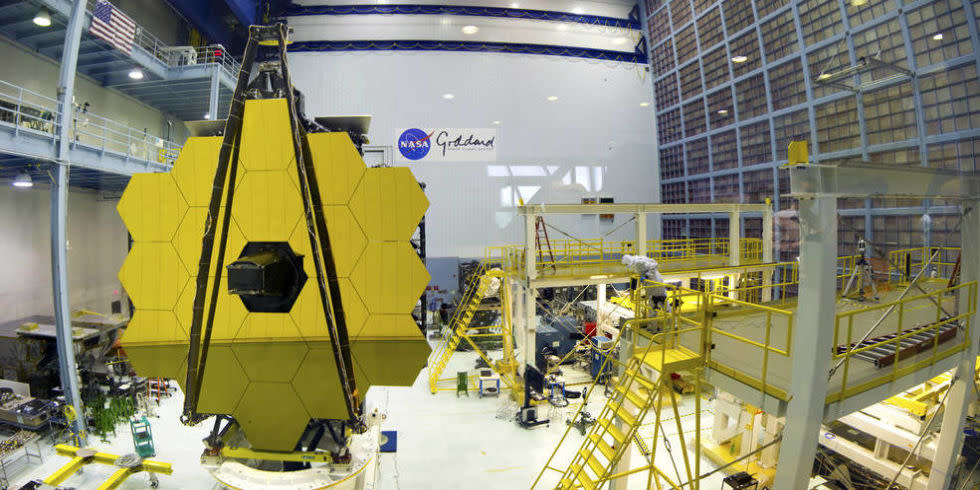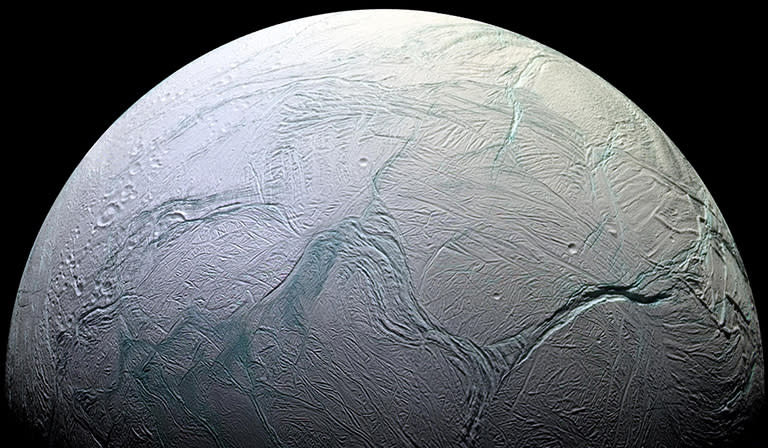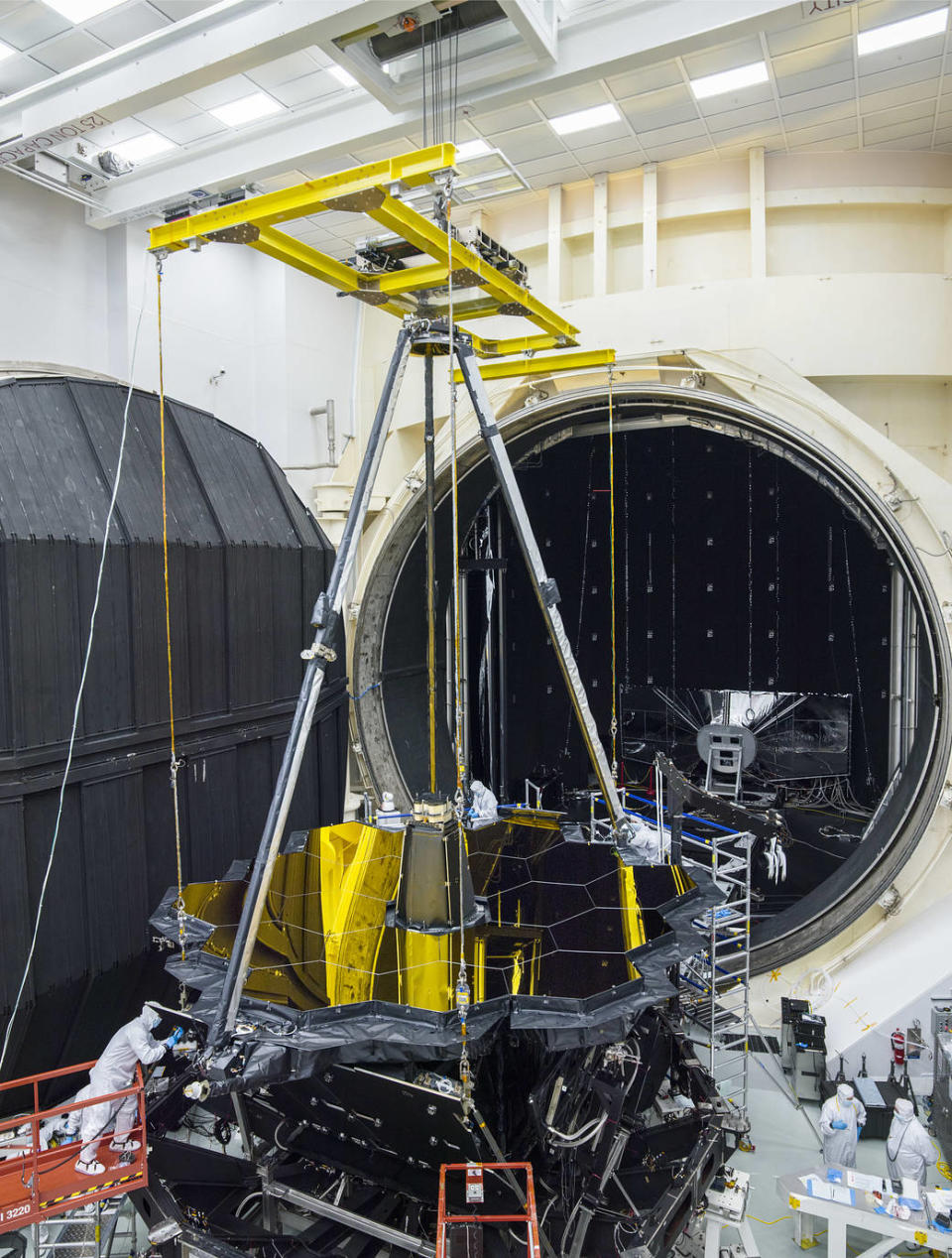The James Webb Space Telescope Will Study the Solar System's Watery Moons

The James Webb Space Telescope (JWST), which will be the most powerful space telescope in history when it launches in October 2018, is currently undergoing cryogenic tests in a giant thermal vacuum known as Chamber A at NASA's Johnson Space Center in Houston. The telescope has been inside Chamber A since mid-July, and there it will stay while technicians test its systems in space-like conditions for another two months or so.
One of the first things James Webb will do when it gets to space next year is look to the watery moons of Jupiter and Saturn. Both Europa, Jupiter's fourth-largest moon, and Enceladus, Saturn's sixth-largest moon, are worlds of icy crusts, and below these 5-to-10-mile-thick sheets of ice flow vast oceans that envelop the entire moons. On Europa, the subterranean ocean is thought to have more water than all the oceans, lakes, and rivers of the Earth.

Enceladus regularly ejects water and ice from its surface in great geysers that erupt into space, and evidence from the Hubble Space Telescope suggests Europa does the same. These plumes of material are what scientists plan to study with the James Webb Space Telescope. The moons were chosen as early targets by scientists who helped design the telescope, and so have first priority to use the JWST for observations. With its precise ability to measure infrared light, Webb should be able to use spectroscopy to determine the chemical composition of the plumes. Within this data, certain chemical imbalances could be indicative of a habitable environment or even alien life-although Webb will not be able to detect any life that might be on these moons directly.
"Are they made of water ice? Is hot water vapor being released? What is the temperature of the active regions and the emitted water?"
Webb will be able to create high-resolution images with its near-infrared camera (NIRCam) of the closer and bigger of the two moons, Jupiter's Europa. At about 88 percent the size of our own moon, Europa is roughly 10 times bigger than Saturn's small moon Enceladus. Scientists will use the near-infrared images of the surface to look for warmer areas that could be signs of plumes or geologic activity. Once they locate a plume, the researchers will use Webb's near-infrared spectrograph (NIRSpec) and mid-infrared instrument (MIRI) to measure the chemical makeup of the water and ice being ejected from the surface.

These plumes, only spotted as dim shadows by Hubble, are still largely a mystery. "Are they made of water ice? Is hot water vapor being released? What is the temperature of the active regions and the emitted water?" asks Geronimo Villanueva, a NASA planetary scientist and the lead scientist on the project to observe Europa and Enceladus with the JWST. "Webb telescope's measurements will allow us to address these questions with unprecedented accuracy and precision."
Farther away and much smaller, Enceladus will be harder to observe with Webb, and high-resolution images of the surface will not be possible. Still, the advanced space telescope should be able to use its sensitive spectroscopic instruments to refine data about Enceladus's composition, both on the surface and in its plumes.
The researchers will be looking for hydrocarbons like methane, methanol, and ethane in the plumes. While an abundance of these organic chemicals could be produced by life, such as microbes sustaining off of hot volcanic vents on the ocean floor, they also could be produced by natural geological processes. If Webb spots these organic signatures, future spacecraft missions to the moons will be necessary to make any conclusions, but it will be a strong indication of a highly active geological process under the surface, which means heat and nutrients, and possibly life similar to what we see on our own ocean floors.
Fortunately, after Webb observes Europa in about two years, it will not be too much longer until we launch a spacecraft targeting that very moon. The Europa Clipper, NASA's next flagship mission beyond the asteroid belt, will launch around 2022 and orbit Jupiter to make about 45 close flybys of Europa. The Clipper will study the moon in more detail than ever before and sample any water or ice that is erupting from the surface.
It is clearer than ever that life on these moons is a real possibility, and NASA has turned much of its attention to finding out.
Source: NASA
You Might Also Like

